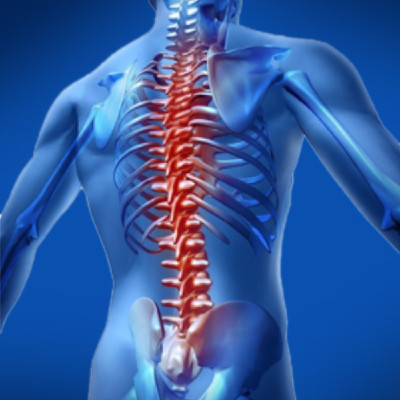Back Pain
Causes and Treatment
The area that is most vulnerable to injury is the lower back, known as the lumbar spine. The lowest few vertebrae in the lumbar spine carry the greatest load and are pivot points for movements. Pain and stiffness in this area are mostly related to muscular spasms, arthritic conditions e.g. spondylosis, ligamentous strains and protruding disc with possible sciatic pains. Pain in the lower back is often called lumbago.
Causes of back pain
- Ageing processes of the spine (spondylosis). The discs between the vertebrae lose their flexibility and shape, and the bony vertebra show signs of wear and tear.
- Trauma - Shocks from falling awkwardly, landing heavily after a jump or activities such as incorrect lifting of heavy objects can put undue pressure on the back which can result in a number of different lower back injuries.
- Protruding or prolapsed intervertebral disc. Patients who suffer from back pain from protruding discs will complain of lower back pain which possibly radiates into one buttock and down the leg.
- Postural causes e.g. incorrect chair at work or at home, bending over too long whilst working, sitting for long periods in car with incorrect car seat positioning.
- Weak core muscles - Muscles which are located around the lower back and abdominal wall provide support and stability for the torso. Over time instability in the lumbar spine will lead to pain to the weaker muscles, discs degeneration, ligaments and tendon inflammation and arthritic conditions.
Treatment
- Try to keep moving - Gentle movement promotes blood flow and healing, but be sure to stop if pain persists..
- Exercises and mobilisation - Exercises which strengthen the core muscles such as the ‘plank’ will increase strength and endurance of muscles which help stabilise the upper body, taking pressure off the lumbar spine. Mobilisation of the lumbar spine can be used to give more range of motion to the lower back.
- Heat or cold packs - which is preferred will have a positive effect. Both can be used to promote blood flow to the lower back and reduce pain.
- Modify your lifestyle if you have noticed that certain activities will cause or worsening your back pain
- Medication: get advise from your GP.
- Physiotherapy. The physiotherapist will assess your back and find out the cause of the origin of the pain. Specific tailor exercises and advice is then given. A combination of manual techniques, electrotherapy, advice and information about the injury will help to ease the pain, make you recover quicker and help to prevent it from happening again.
